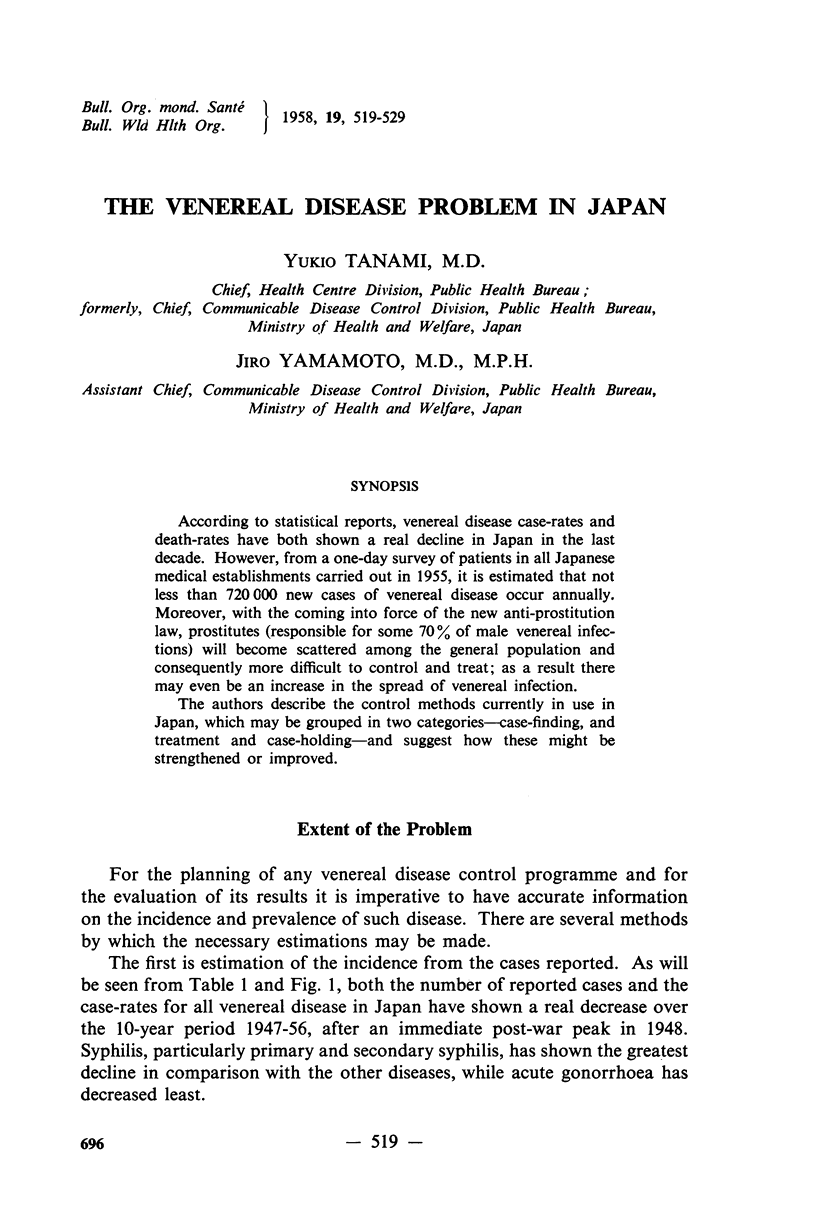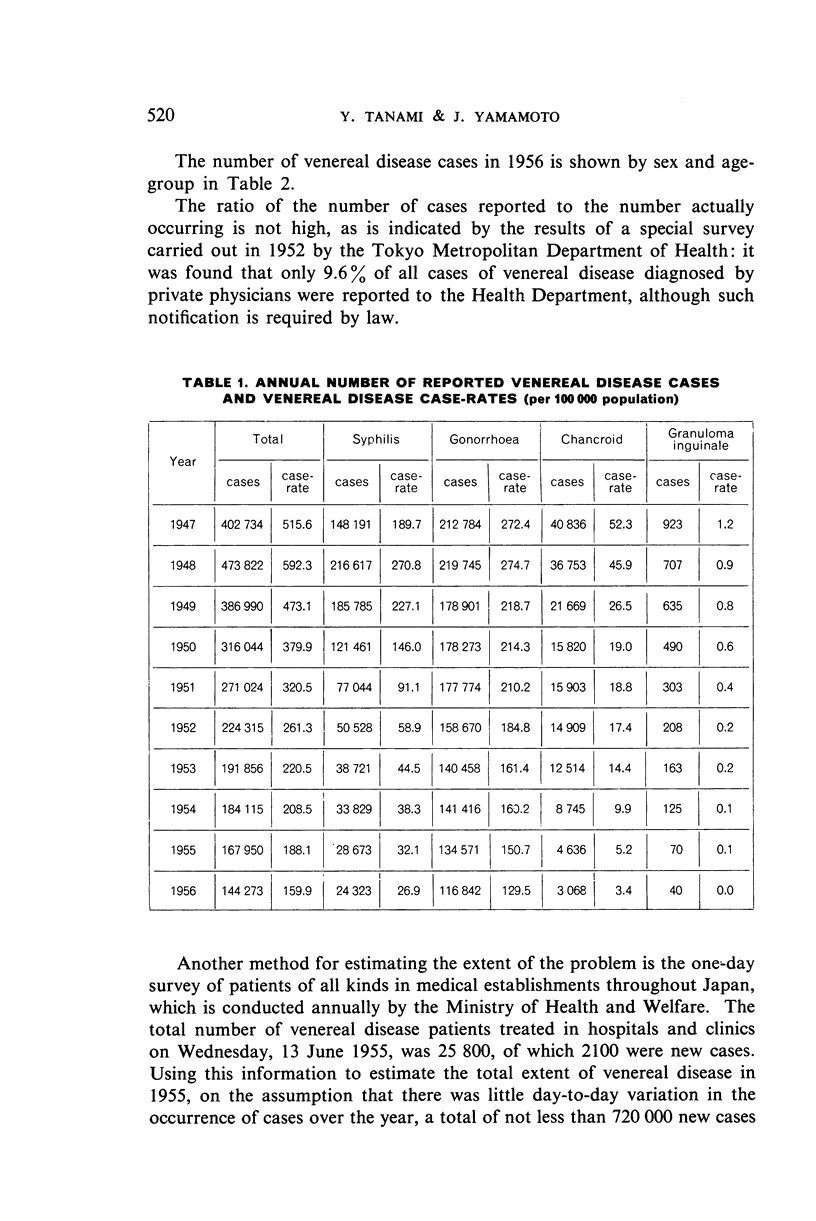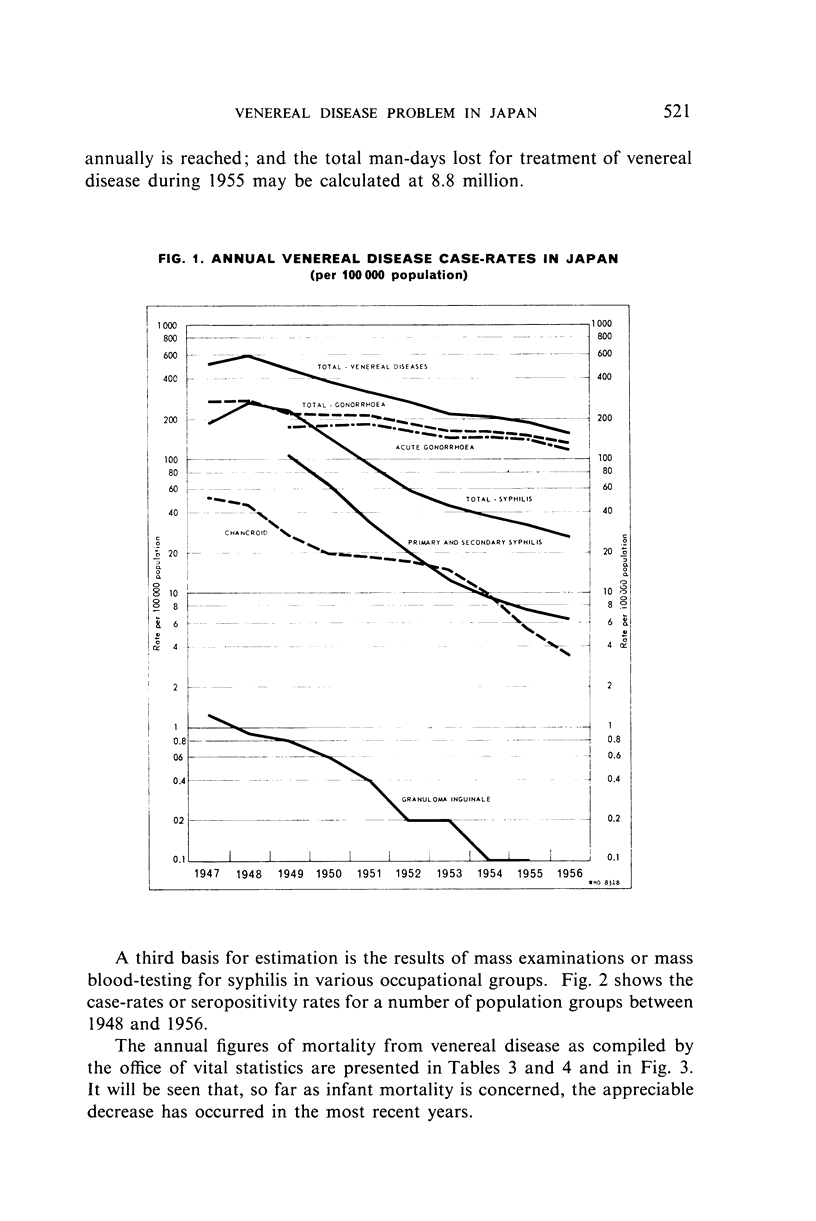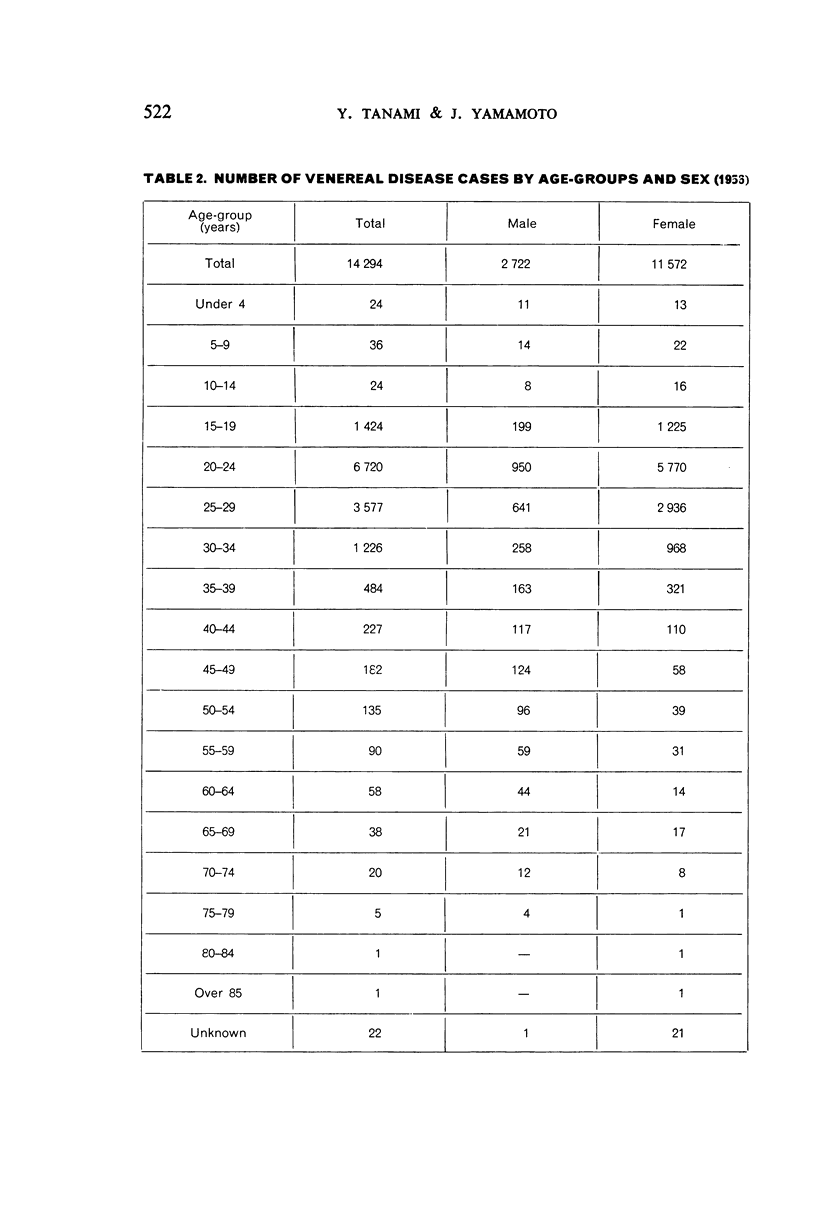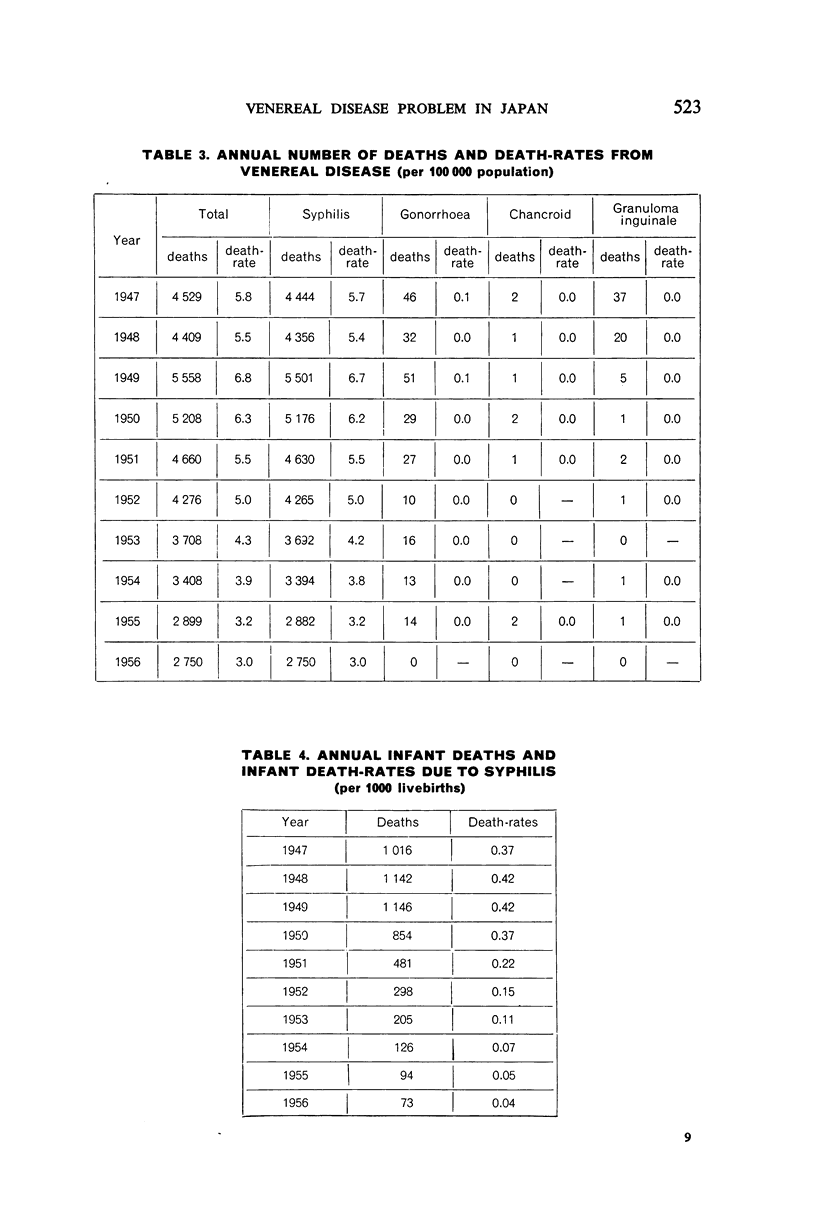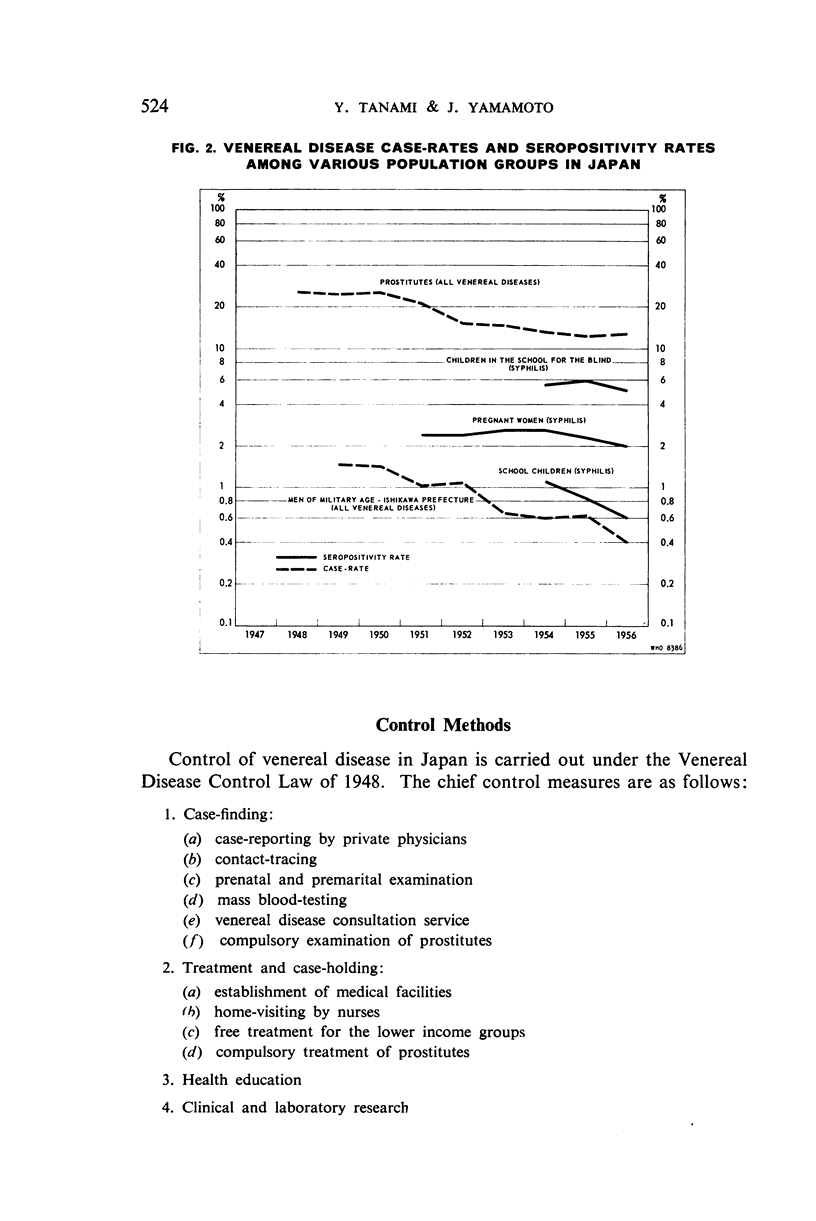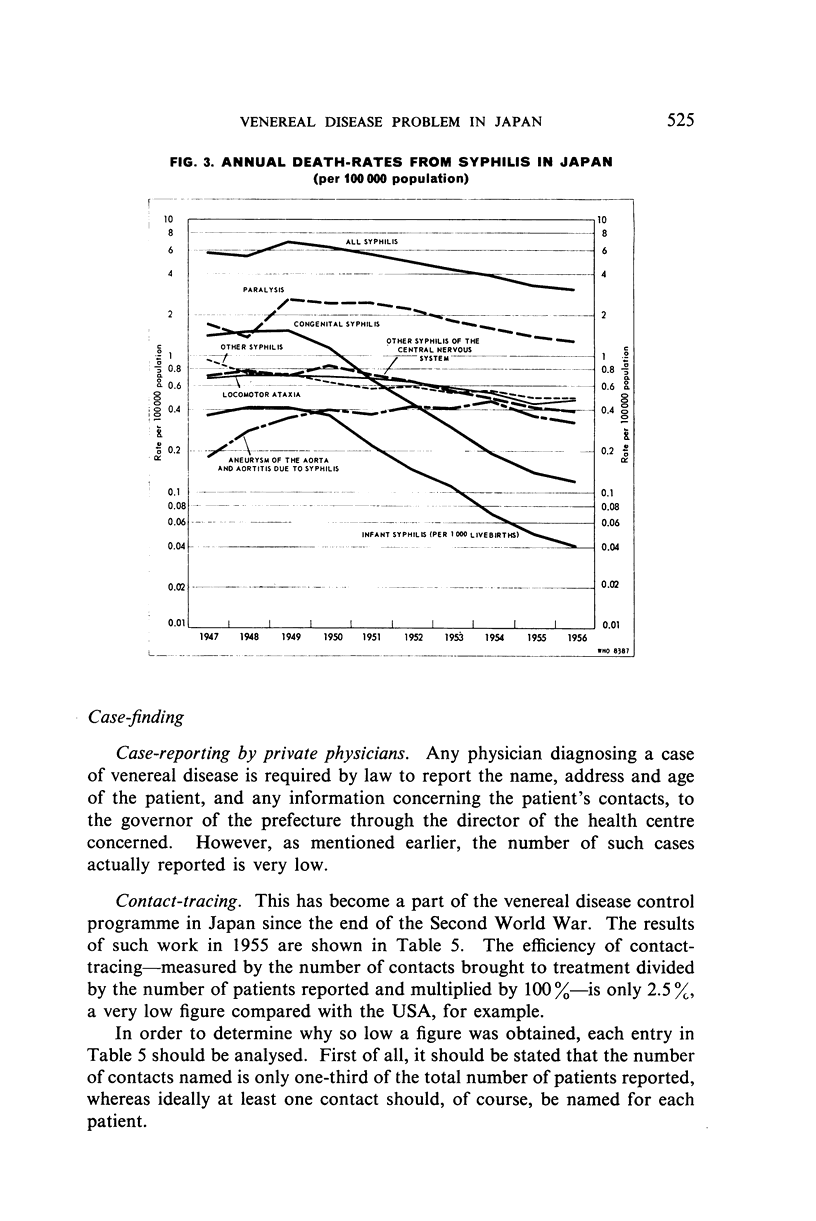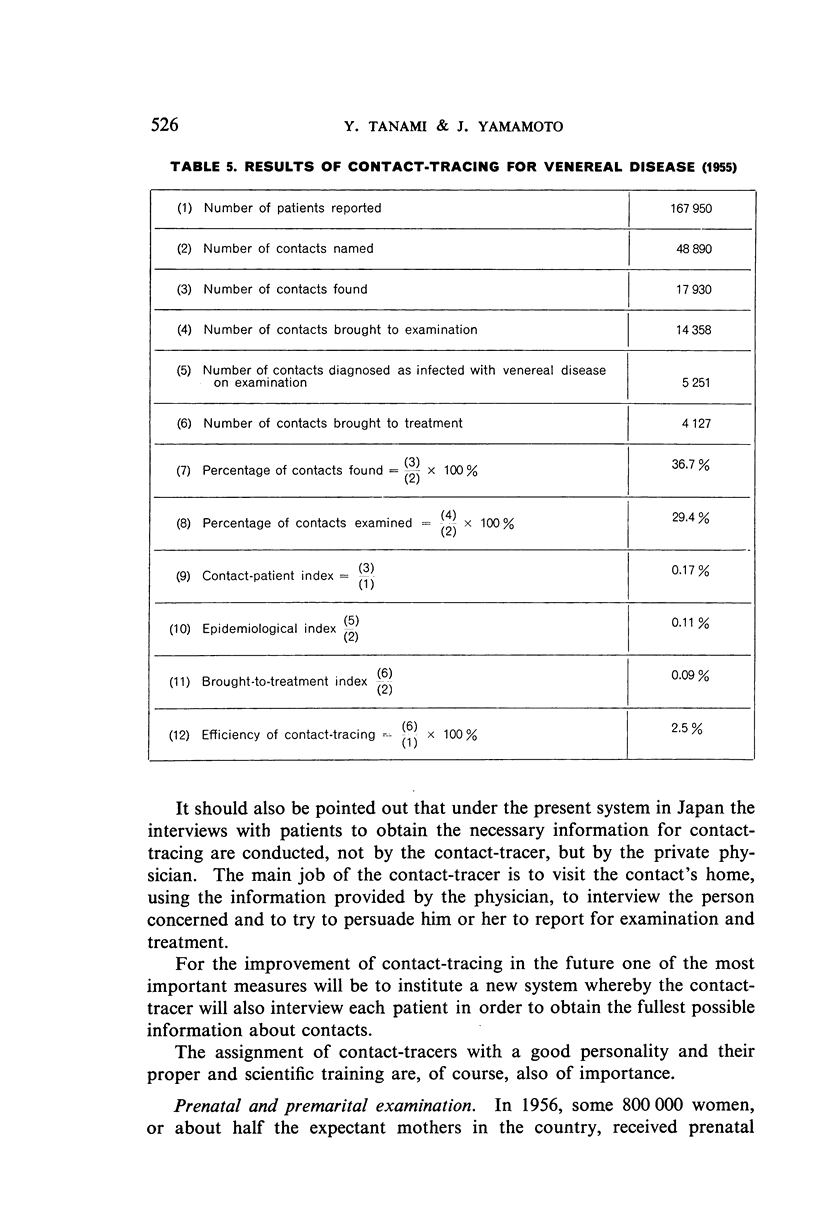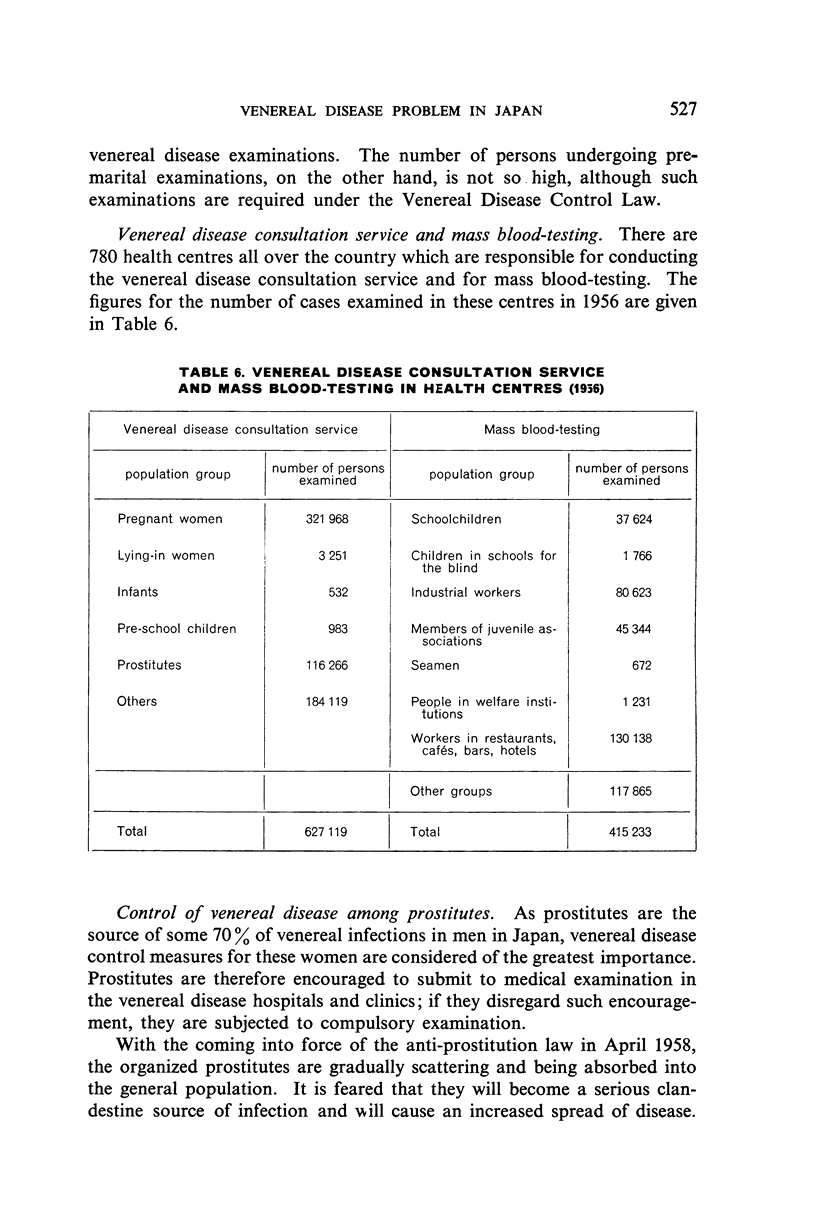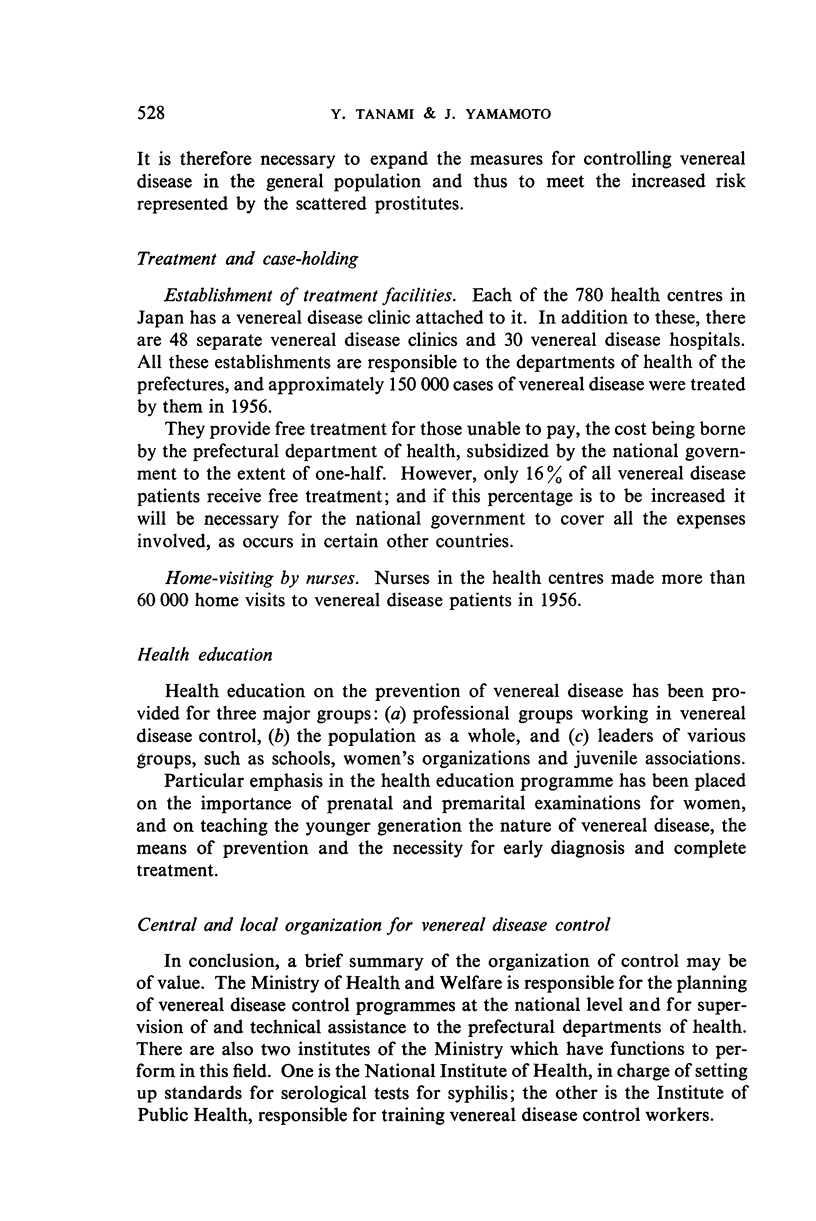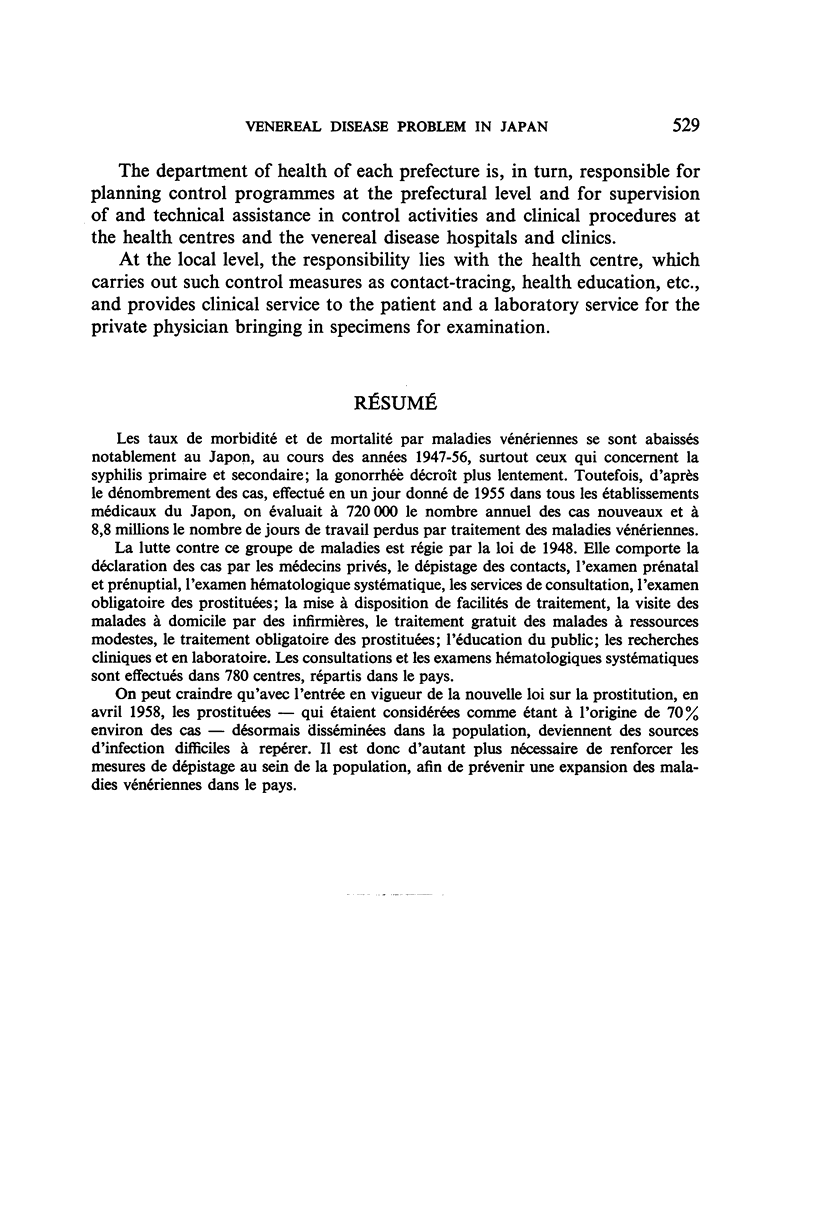Abstract
According to statistical reports, venereal disease case-rates and death-rates have both shown a real decline in Japan in the last decade. However, from a one-day survey of patients in all Japanese medical establishments carried out in 1955, it is estimated that not less than 720 000 new cases of venereal disease occur annually. Moreover, with the coming into force of the new anti-prostitution law, prostitutes (responsible for some 70% of male venereal infections) will become scattered among the general population and consequently more difficult to control and treat; as a result there may even be an increase in the spread of venereal infection.
The authors describe the control methods currently in use in Japan, which may be grouped in two categories—case-finding, and treatment and case-holding—and suggest how these might be strengthened or improved.
Full text
PDF